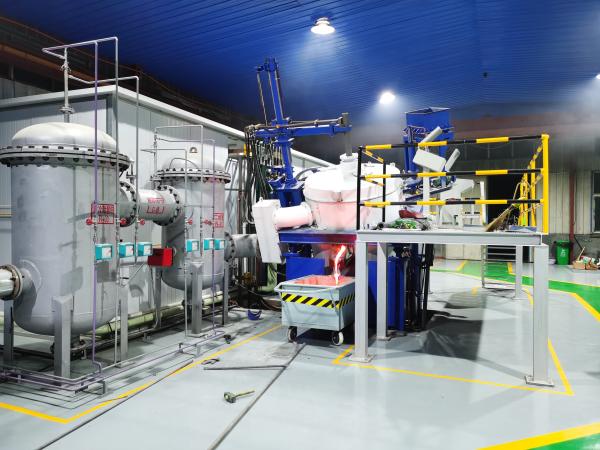| Sign In | Join Free | My himfr.com |
|
| Sign In | Join Free | My himfr.com |
|
| Ask Lasest Price | |
| Brand Name : | Chengda |
| Model Number : | OEM |
| Certification : | ISO 9001 |
| Price : | Negotiation |
| Payment Terms : | L/C,T/T,Western Union |
| Supply Ability : | 100 units |
| Delivery Time : | 2~3 months |
I. Definition and Basic Principle
A Direct Current (DC) Electric Arc Furnace is a metallurgical
device that uses DC electricity to generate an electric arc for
heating and melting metals. It is widely applied in steelmaking,
alloy production, and specialty material smelting. Compared to
traditional AC arc furnaces, DC arc furnaces utilize unidirectional
current, resulting in a more stable arc and higher thermal
efficiency.
II.Main Structure
Electrode System
DC Electrode: Typically a single graphite or carbon electrode fixed
at the center of the furnace roof, powered by a DC source.
Furnace Bottom Conductive Layer: The furnace bottom is lined with
conductive materials as the positive pole, forming a closed
circuit.
Furnace Body
Constructed from refractory materials for high-temperature
resistance and insulation, protecting the furnace environment and
reducing heat loss.
Power System
A dedicated DC power supply provides high-current, low-voltage DC
to ensure stable arc combustion.
Cooling System
Equipped with water cooling for the electrode and furnace mouth to
prevent damage from high temperatures.
Control System
Automates the regulation of current, voltage, and electrode positioning for precise process control.
III. Working Principle
Arc Formation
DC current flows between the electrode and the metal charge,
producing an electric arc with temperatures reaching
3,000°C–5,000°C, rapidly melting the metal.
Heat Distribution
The unidirectional DC arc ensures concentrated and uniform heat
distribution, reducing local overheating or segregation.
Eliminates electromagnetic force-induced turbulence in the melt
pool, unlike AC furnaces.
Smelting Process
Raw materials are melted by the high-temperature arc, with
auxiliary processes like oxygen/fuel injection for composition
adjustment.
Shorter smelting cycles and lower energy consumption enable
efficient production.
IV. Advantages
High Efficiency: Stable arc reduces heat loss, with smelting speed
10%-20% faster than AC furnaces.
Low Electrode Consumption: Single-electrode design reduces material
usage and frequent positioning adjustments.
Environmental Benefits: Lower noise and dust generation compared to
AC arc furnaces.
High-Quality Metal: Stable melt pool ensures uniform composition
and fewer inclusions.
V. Applications
Steel Production: High-quality stainless steel, alloy steel, and
tool steel.
Non-Ferrous Smelting: Refining copper, aluminum, nickel, and other
alloys.
Specialty Materials: Super-strength steel, magnetic materials, and
aerospace alloys.
Scrap Recycling: Efficient processing of scrap metal and alloys for
resource recycling.
VI. Future Trends
Large-Scale and Intelligence: Larger capacity furnaces integrated
with AI for optimized process control.
Green Technology: Combined with waste-heat recovery and emission
scrubbing to reduce carbon footprint.
Hybrid Smelting: Integration with oxygen top-blowing or plasma
assistance for efficiency gains.
Advanced Materials: Development of durable graphite/carbon
composites to reduce electrode costs.
VII. Conclusion
The DC electric arc furnace stands out for its efficiency,
stability, and environmental friendliness, making it ideal for
high-quality metal production. Despite higher initial investments,
its long-term operational benefits and technological advantages
position it as a key asset in modern metallurgy, particularly for
steel, non-ferrous metals, and specialty material applications.


|




